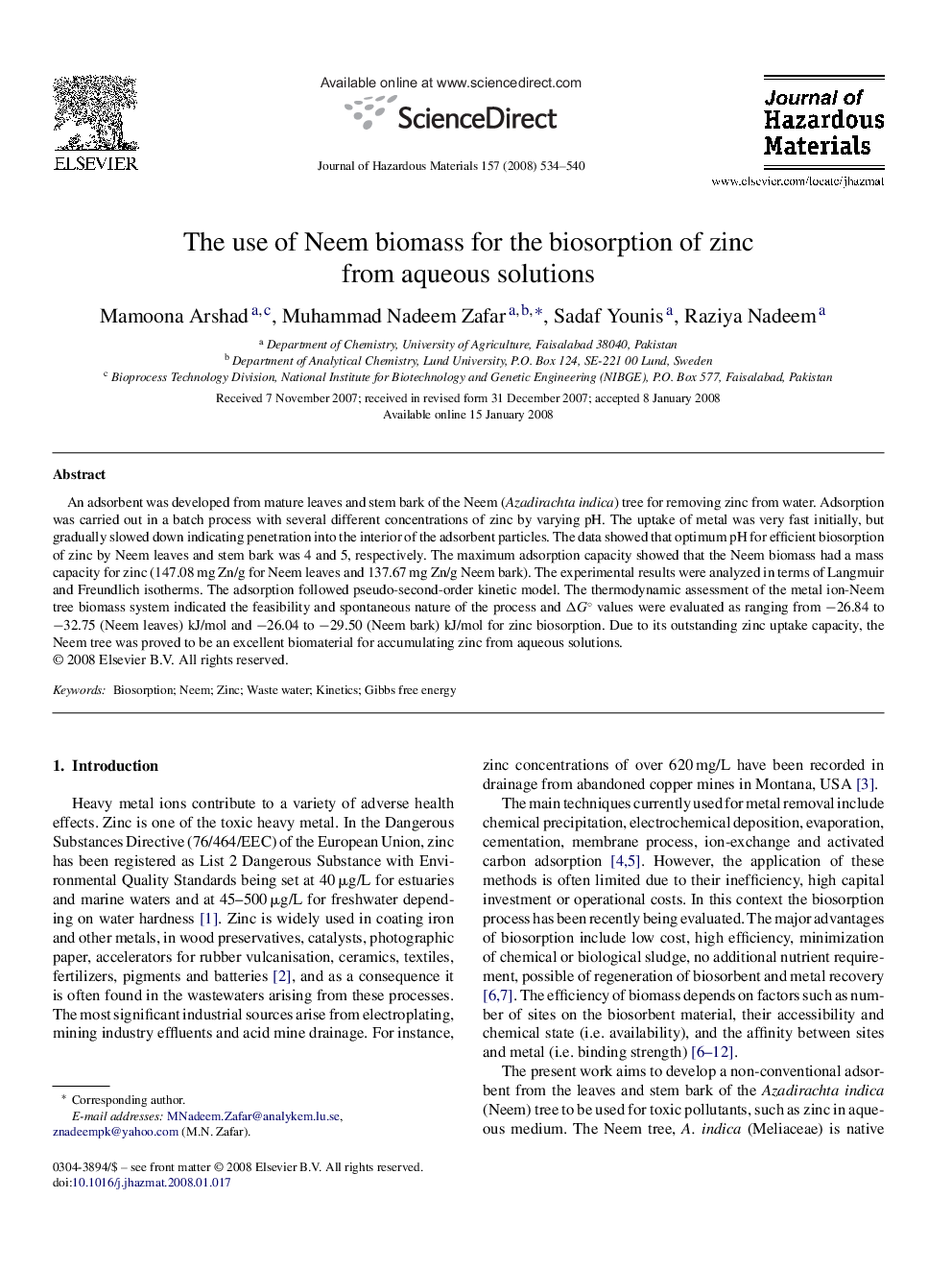| Article ID | Journal | Published Year | Pages | File Type |
|---|---|---|---|---|
| 582912 | Journal of Hazardous Materials | 2008 | 7 Pages |
Abstract
An adsorbent was developed from mature leaves and stem bark of the Neem (Azadirachta indica) tree for removing zinc from water. Adsorption was carried out in a batch process with several different concentrations of zinc by varying pH. The uptake of metal was very fast initially, but gradually slowed down indicating penetration into the interior of the adsorbent particles. The data showed that optimum pH for efficient biosorption of zinc by Neem leaves and stem bark was 4 and 5, respectively. The maximum adsorption capacity showed that the Neem biomass had a mass capacity for zinc (147.08 mg Zn/g for Neem leaves and 137.67 mg Zn/g Neem bark). The experimental results were analyzed in terms of Langmuir and Freundlich isotherms. The adsorption followed pseudo-second-order kinetic model. The thermodynamic assessment of the metal ion-Neem tree biomass system indicated the feasibility and spontaneous nature of the process and ÎG° values were evaluated as ranging from â26.84 to â32.75 (Neem leaves) kJ/mol and â26.04 to â29.50 (Neem bark) kJ/mol for zinc biosorption. Due to its outstanding zinc uptake capacity, the Neem tree was proved to be an excellent biomaterial for accumulating zinc from aqueous solutions.
Related Topics
Physical Sciences and Engineering
Chemical Engineering
Chemical Health and Safety
Authors
Mamoona Arshad, Muhammad Nadeem Zafar, Sadaf Younis, Raziya Nadeem,
